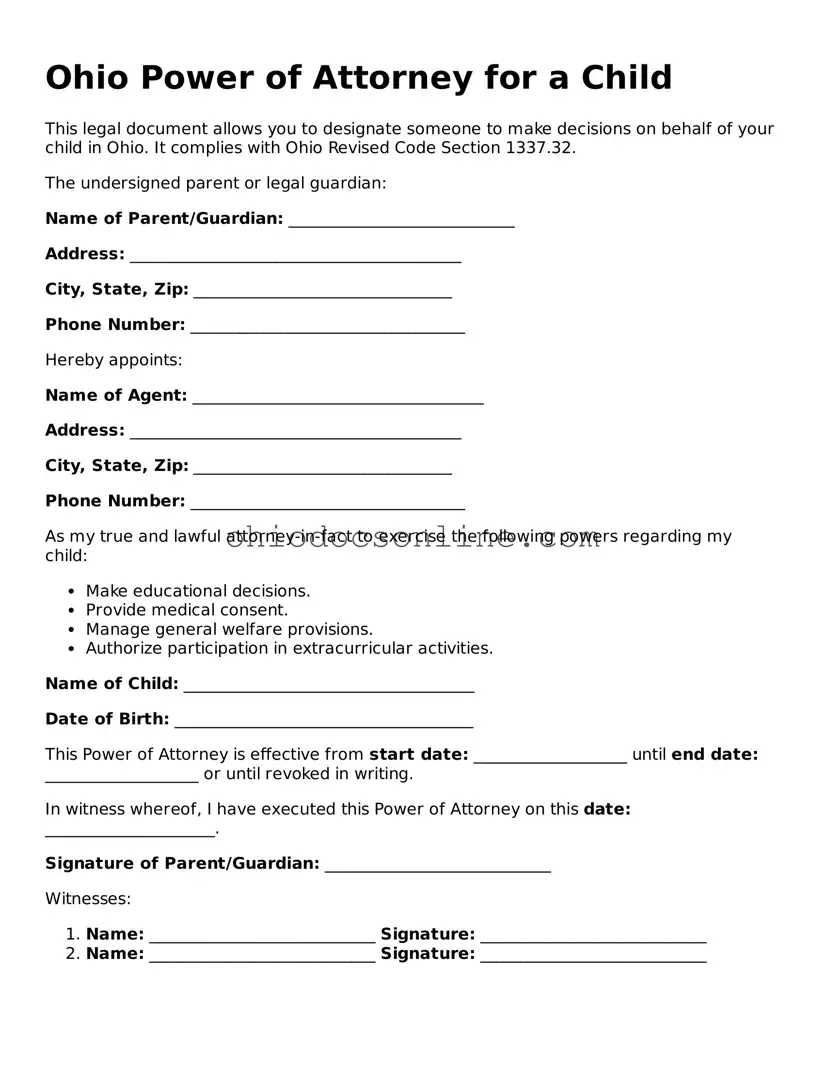Printable Power of Attorney for a Child Template for Ohio
The Ohio Power of Attorney for a Child form is a legal document that allows a parent or guardian to grant another individual the authority to make decisions on behalf of their child. This arrangement can be beneficial in various situations, such as when parents are temporarily unavailable or need assistance with caregiving. Understanding the implications and requirements of this form is essential for ensuring the child's well-being and legal protection.
Open Editor
